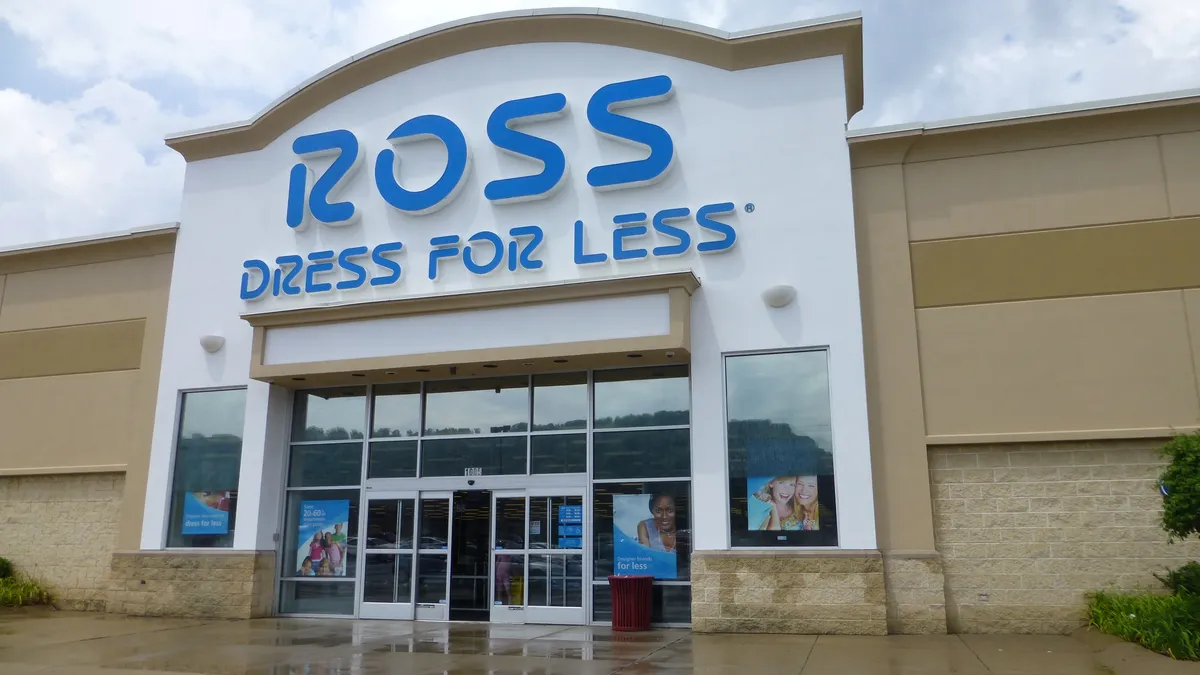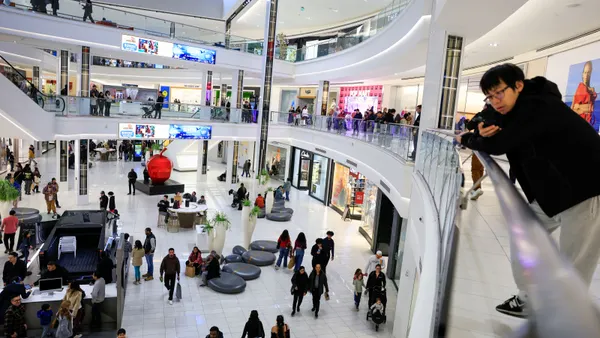Dive Brief:
-
Despite the closure of department stores and other apparel, footwear and home goods retailers, off-price's dominance may be waning, according to a note from UBS analysts emailed to Retail Dive this week. "The market views Off-Price as defensive and internet-proof," according to the UBS team lead by Jay Sole. "We think [earnings per share] will eventually fall short of market expectations."
-
The store count in the segment fell 6.2% year over year, "the highest rate in at least ten years," according to the report. "Yet, the consensus forecasts Off-Price EBIT dollars ([TJX Cos, Ross Stores, and Burlington]) to rise only 3.5% this year vs. its 7% 5-year average increase," UBS wrote.
-
While off-price retailers in recent years have notably stolen market share from department stores, they are now, increasingly, competing with each other, UBS said. Meanwhile, department stores and others, including Amazon, are blunting the discounters' price advantage with steady promotions and their own off-price banners.
Dive Insight:
Off-price retailers have had quite a streak, soaking up sales, much of it siphoned from department stores, whether the economy is good or bad.
But they could be peaking, for the reasons outlined by UBS. There are other signs, too. Nordstrom in its most recent quarter noted that net sales at its Rack off-price unit, normally a boon, fell 0.6%. Kohl's shut down its "Off Aisle" off-price experiment last month. Ross had a tough holiday quarter that prompted it to lower its outlook for this year. And earlier this year, TJX Cos., after largely shunning e-commerce in order to preserve its winning in-store treasure hunt offer, said it's turning to digital sales for growth for its Marshalls banner.
The move online is a sign that off-price shoppers aren't as dedicated to brick and mortar as many once believed. Amazon's expanding theft of share in apparel is largely thanks to off-price shoppers who, according to UBS's report, are among those most likely to go there to hunt for women's, men's and children's apparel and footwear.
Wells Fargo analysts over a year ago were already souring a bit on the sector, warning that its own massive expansion would get the best of it. Ross has been on a tear, with plans to add another 75 Ross stores and 25 dd's Discounts stores to its fleet this year. TJX in May said that it had expanded its store count by 75 stores for a total of 4,381 in the first quarter alone.
Macy's on Monday will add to all that with an announcement emailed to Retail Dive of plans to open 23 new Backstage stores on Aug. 10, pushing the location count nationwide past 200, and a new Backstage distribution center in Columbus, Ohio, on Aug. 15. Most are found within Macy's full-line stores, but have different buying and distribution channels. "Macy's Backstage stores are designed to bring great deals and the fun of the hunt into our existing Macy's locations," Michelle Israel, Macy's senior vice president of off-price, said in a statement. "Backstage stores focus on value and newness, guaranteeing that shoppers will find an amazingly-priced assortment of recognizable brands and trends each visit. Frequent deliveries ensure there is always a new reason to come in and shop."
But UBS's assessment "underscores my view that Macys is sawing off its own legs" with its Backstage effort, according to Mark Cohen, director of retail studies at Columbia University's Graduate School of Business.
"I've said repeatedly, echoed by others with credible experience, that The Rack is erosive to Nordstrom's brand equity and I believe that is doubly true with regard to Macys," he told Retail Dive in an email. "This, where Backstage is being expanded within Macys own stores. Backstage may be propping up Macys comps but that reflects a short sighted view of where Macys is headed in the longer term."















